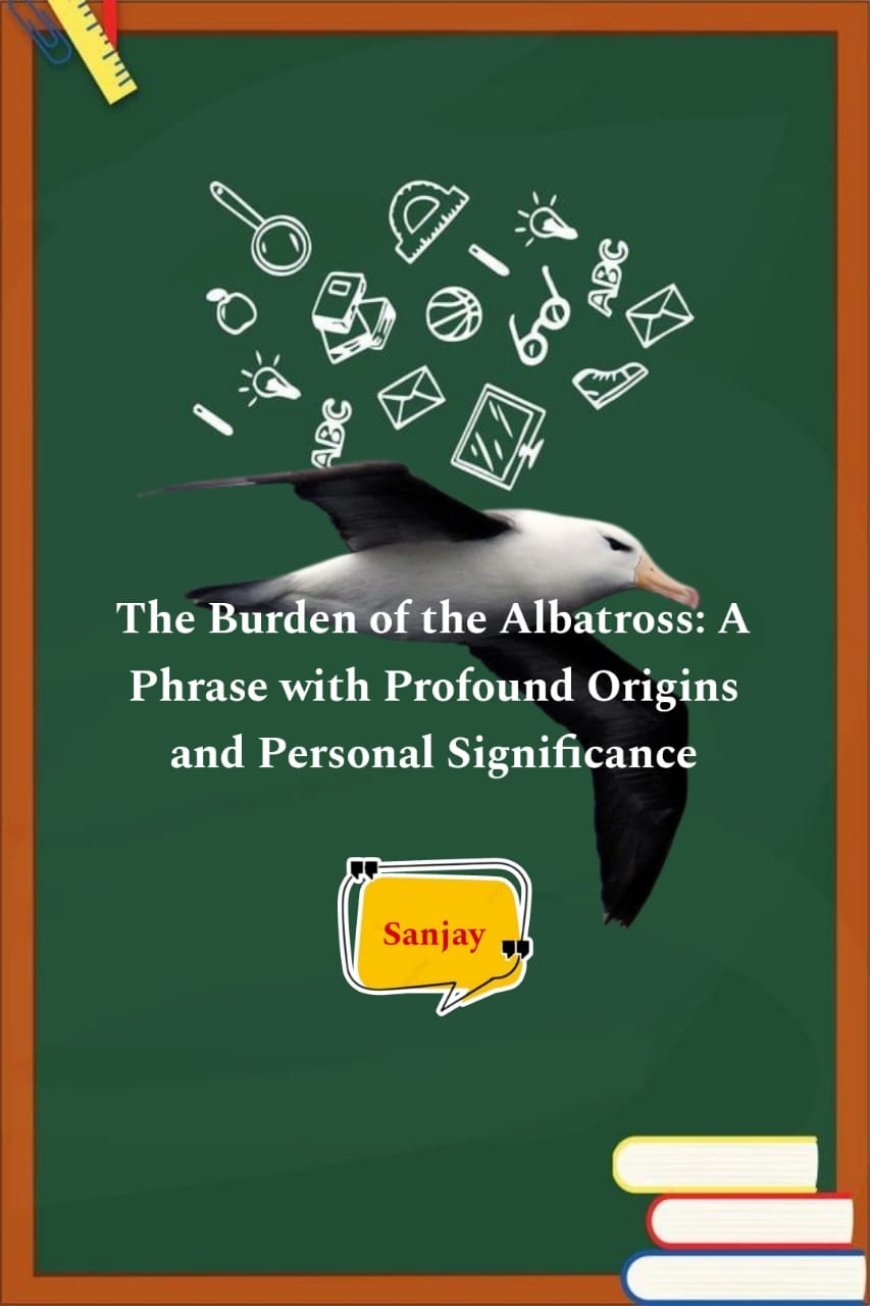The Burden of the Albatross: A Phrase with Profound Origins and Personal Significance

By Sanjay Pattnayak
During the 2003 Cricket World Cup, renowned commentator Ravi Shastri wrote an insightful column reflecting on India's performance in their first three matches. In the first stanza, he provided a vivid image of the Indian cricket team's early struggles:
"The Indian cricket team managed to secure a victory in their first match against the 'minnows' Netherlands by a margin of just 68 runs. However, in their second match, they were soundly defeated by the Australians, losing by nine wickets. Ahead of their third match against Zimbabwe, the position of Captain Sourav Ganguly seemed precarious, resembling the plight of the 'ancient mariner' who had an 'albatross around his neck.' Fortunately, the team managed to put up a strong performance against Zimbabwe, scoring 255 runs in their allotted 50 overs and bowling them out for 172."
This reference to "an albatross around his neck" is a compelling allusion to a famous literary work, and today, I would like to explore the origin of this phrase and reflect on its personal significance in my life.
Origin of the Phrase: "An Albatross Around One's Neck"
The phrase "albatross around one’s neck" denotes an oppressive burden or a persistent guilt that one cannot escape. Its origin can be traced to Samuel Taylor Coleridge’s haunting poem, The Rime of the Ancient Mariner. In this 1798 work, a mariner who shoots a friendly albatross—a symbol of nature's goodwill—is punished by being forced to wear the bird’s carcass around his neck as a symbol of his guilt and error. This act serves as a cautionary tale, warning against reckless harm to nature and symbolizing the weight of conscience and moral responsibility.
The Significance of the Phrase in My Life
Before 2003, I had the privilege of teaching Class 10 students at Kendriya Vidyalaya. My primary subject was Mathematics, and I was also well-versed in Science, teaching both with ease. However, due to my versatility, I was also entrusted with teaching English. I approached this responsibility with the mindset that it was like a "buy two, get one free" offer: students could learn three subjects under one roof. Despite my dedication, teaching English posed unique challenges, particularly when it came to literature.
One of the texts in the syllabus was Coleridge’s The Rime of the Ancient Mariner. This was my first encounter with the phrase "albatross around one’s neck," and it left a lasting impression. Teaching this complex poem was a challenge I embraced, but even as I worked to convey its themes, I was aware that my explanation might have fallen short. Though my students seemed to understand the poem, I have always regretted that I could not delve as deeply into its nuances as I would have liked.
Today, in revisiting this phrase, I feel a renewed determination to bring justice to this masterpiece of literature. Let me attempt to summarize and share the essence of Coleridge’s haunting ballad.
Summary of The Rime of the Ancient Mariner
Samuel Taylor Coleridge’s The Rime of the Ancient Mariner, published in 1798, is a work unlike most of the poetry of its era. Inspired by a friend’s dream, Coleridge wrote the poem in a folk ballad style, imbuing it with a timeless, mystical quality. The poem is divided into seven parts and is filled with archaic language, dark undertones, and obscure allusions to old beliefs and practices.
In stark contrast to the pastoral and lighthearted poems of other Romantic poets like William Wordsworth, Coleridge’s tale plunges readers into an eerie, supernatural world. The narrator—the ancient mariner himself—is a strange and almost frightening figure with a "glittering eye" and a "long beard," exuding both wisdom and sorrow. He represents the voice of nature and carries an air of mystique that makes him feel ancient, as though he has become a timeless witness to the power of the natural world.
The story begins with the mariner recounting his voyage at sea, where he and his crew encounter an albatross. They view the bird as a good omen and a friend. However, in a thoughtless act, the mariner shoots the albatross, sparking a chain of supernatural events. His action is a grievous crime against nature, and the consequences are dire. The natural world—personified by the winds, waves, and the sun—seems to turn against the mariner and his crew.
The dead albatross becomes a symbol of guilt and punishment. The mariner is forced to wear the bird's body around his neck, a constant, visible reminder of his sin. This physical burden is emblematic of a deeper, moral weight, one that he must bear for the rest of his life. The mariner’s punishment does not end with the physical discomfort; he is also cursed with eternal life, doomed to wander and recount his cautionary tale to those he meets. His survival, juxtaposed with the death of his entire crew, highlights nature’s enduring power and serves as a warning to humanity.
As the poem unfolds, the mariner begins to repent and gains a newfound respect for all of God's creatures. He realizes the interconnectedness of all living things and acknowledges his wrongdoing. The poem culminates in a moral message, emphasizing love and reverence for all forms of life. Coleridge concludes with a Christian allegory, “He prayeth best, who loveth best,” suggesting that those who show compassion and love toward all beings will find grace.
Conclusion
The phrase "an albatross around one’s neck" has thus come to represent an inescapable burden, often a guilt or regret stemming from past actions. Coleridge’s The Rime of the Ancient Mariner remains a timeless reminder of the consequences of disregarding the sanctity of nature. For me, this phrase also serves as a personal reminder of the moments I could have done more in teaching or conveying understanding.
This poem, with its haunting narrative and profound message, continues to resonate with readers centuries after it was written. It invites us to reflect on our actions, urging us to respect and cherish the world around us, lest we too find ourselves bearing the weight of an albatross—a burden we cannot escape.









































